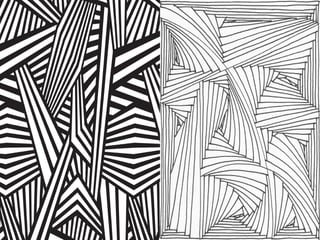7 Elements of Art: Line

The element of 7 Elements of Art: Line serves as a foundational aspect of artistic expression, influencing both the form and emotional resonance of a piece. From the precision of vertical lines to the fluidity of curves, each variation carries its own significance within a composition. Lines not only guide the viewer’s gaze but also evoke feelings and establish movement, shaping the overall narrative. Understanding the multifaceted nature of line can enhance one’s appreciation of art, prompting the question of how these elements interact to create meaning. What deeper insights might emerge when we explore this essential component further?
Definition of Line
When exploring the elements of 7 Elements of Art: Line, one cannot overlook the fundamental role of line, which serves as the cornerstone for visual communication in various artistic disciplines.
Line characteristics, including thickness, direction, and texture, convey mood and form. Additionally, line symbolism enriches artworks, representing concepts such as movement, boundaries, and emotion.
Thus, lines are essential for both structure and expression in art.
Read more: Desktop:2ihdzbkd6bk= Drake Wallpaper
Types of Lines
Lines frequently manifest in various forms, each serving distinct purposes and evoking different emotional responses in the viewer.
Vertical lines symbolize strength, while horizontal lines convey stability.
Diagonal lines suggest movement, and curved lines introduce fluidity.
Dashed lines can imply movement or separation, whereas thick and thin lines create emphasis.
Contour lines define shapes, and organic lines offer a natural aesthetic, enriching artistic expression.
Line in Composition
The role of line in composition is foundational, acting as both a structural framework and a dynamic element that guides the viewer’s eye through the artwork.
Effective use of line balance creates a sense of stability, while line harmony fosters cohesion among various elements.
Emotional Impact of Line
Lines are powerful visual tools that can evoke a wide range of emotions, shaping the viewer’s experience and interpretation of art.
Different types of lines—such as jagged, smooth, horizontal, or vertical—carry distinct emotional connotations, influencing how a piece is perceived.
Understanding the emotional impact of line is essential for artists and viewers alike, as it enhances the narrative and emotional depth within a work of art.

Lines Convey Emotion
Throughout the world of art, the use of line serves as a powerful vehicle for conveying emotion, often evoking feelings that resonate deeply with viewers.
Line symbolism can represent various emotional states, while line contrast enhances these effects, emphasizing tension or harmony.
Artists skillfully manipulate these elements to elicit specific responses, making lines not just visual tools but profound communicators of human experience.
Types of Lines
Artistic expression is significantly influenced by the various types of lines employed by artists, each carrying its own emotional weight and meaning.
Curved lines evoke softness, while geometric lines suggest order. Horizontal lines impart tranquility, vertical lines convey strength, and diagonal lines create dynamism.
Thick lines provide boldness, whereas thin lines suggest delicacy. Broken lines imply movement, contrasting with the stability of continuous lines.
Line and Movement
Lines are fundamental in guiding the viewer’s eye and establishing a sense of movement within a composition.
Different types of lines—such as curved, diagonal, or horizontal—can evoke varied emotional responses and direct visual flow, while the weight of a line can enhance or diminish this effect.
Understanding the interplay of these elements is crucial for artists seeking to manipulate movement and create dynamic visual narratives.
Types of Lines
The diverse types of lines play a crucial role in conveying movement within a composition, influencing both the viewer’s perception and emotional response.
Curved lines suggest fluidity, while diagonal lines imply dynamic action. Vertical lines evoke strength, and horizontal lines depict stability.
Thick and thin lines create emphasis, while broken and continuous lines suggest rhythm. Implied and contour lines guide the viewer’s eye, enhancing narrative flow.
Visual Direction Importance
In visual composition, the strategic use of line is fundamental in establishing direction and guiding the viewer’s gaze throughout the artwork.
Line direction and orientation create pathways for the eye, leading to focal points and enhancing narrative flow.
Line Weight Impact
While many elements contribute to the perception of movement in a composition, line weight plays a crucial role in conveying dynamics and energy.
Variations in line thickness create a visual hierarchy, guiding the viewer’s eye and emphasizing certain areas. Thicker lines often suggest strength and stability, whereas thinner lines can evoke delicacy and fluidity, ultimately enhancing the sense of movement within the artwork.
Cultural Significance of Line
How does the line, a seemingly simple element of art, transcend its basic form to embody profound cultural meanings across various societies?
Lines serve as powerful cultural symbolism, representing everything from borders and boundaries to spiritual pathways.
Historical context reveals how different civilizations utilized line to convey identity, unity, and conflict, demonstrating its vital role in shaping collective human experience and expression.
Techniques for Using Line
The cultural significance of line not only highlights its symbolic roles but also informs the myriad techniques artists employ to harness its expressive potential.
Line drawing serves as a foundational technique, allowing for simplicity and clarity. Contour lines, in contrast, define shapes and forms, creating depth and movement.
Mastering these techniques empowers artists to convey emotions and ideas with remarkable precision and creativity.
Read more: Desktop:2mqmygljdvc= Kuromi Wallpaper
Conclusion
In conclusion, 7 Elements of Art: Line serve as the backbone of artistic expression, shaping both composition and viewer perception. Much like a conductor guiding an orchestra, lines orchestrate the visual elements of a piece, directing attention and evoking emotion. Artists utilize various line types to create narratives, much as a storyteller uses varied tones to enhance a tale. Ultimately, the mastery of line transcends mere technique, becoming a language through which complex ideas and feelings are communicated in the visual arts.






